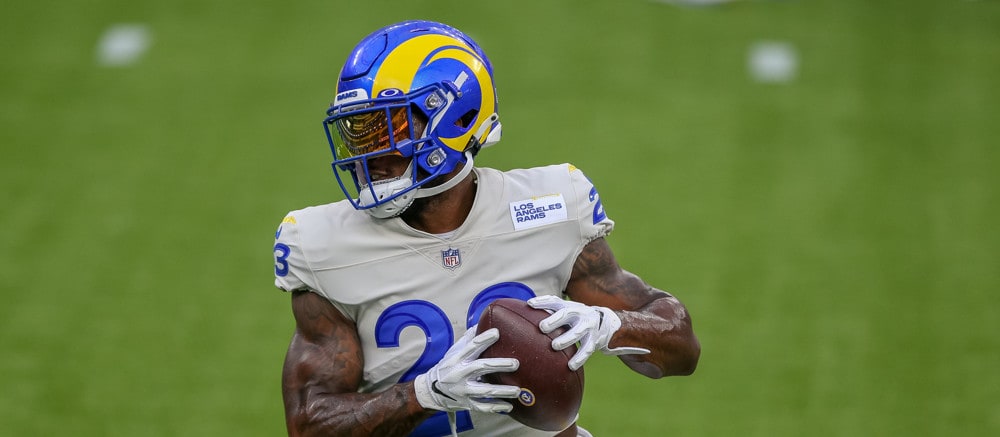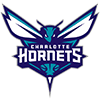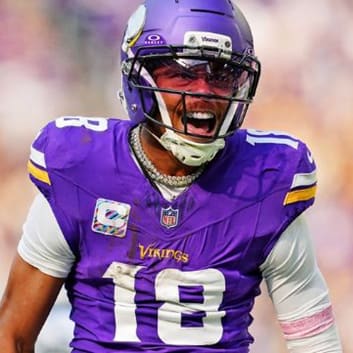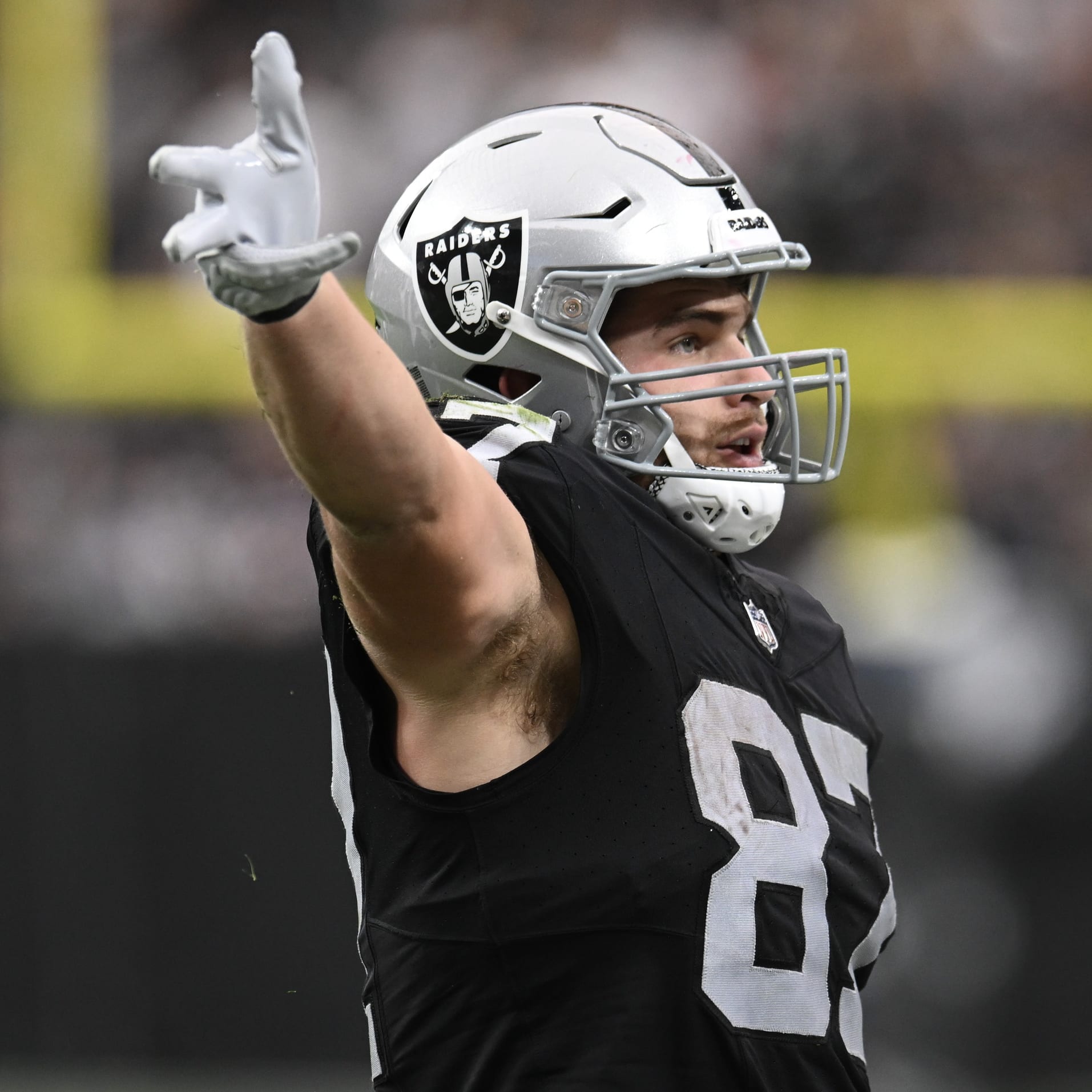Last year's NFL draft featured a memorable amount of running back talent, but of the first five picked, only Jonathan Taylor had the opportunity to fully break out. It's therefore not surprising that many of this year's breakout candidates are running backs from the 2020 draft — players who have demonstrated talent and might have arrived fully last year if they'd had better luck with injuries or playing time.
Of course, players at positions other than running back will break out this year too, and this article will identify them as well. The required script is usually similar no matter the position: talent plus opportunity generally results in production, so imminent breakouts should trace to players who have flashed talent and stand to benefit from improved opportunity, be it increased playing time or, particularly with quarterbacks, an improved supporting cast.
NFFC 12-team standard-league ADP data is noted for each player.
Cam Akers, RB, Rams
Summer ADP: No. 11, RB9
Akers was the fourth running back taken in last year's draft as the Rams traded up to select him 52nd overall in the second round. Akers investors entered last season with high hopes, only to witness a slow start. Darrell Henderson and Malcolm Brown clouded the backfield picture, and Rams coaches indicated that Akers' pass blocking was holding him back.
But Akers earned the trust of his coaches as the season progressed, and by the end of the year he stood atop the Rams' running back depth chart. He totaled
Last year's NFL draft featured a memorable amount of running back talent, but of the first five picked, only Jonathan Taylor had the opportunity to fully break out. It's therefore not surprising that many of this year's breakout candidates are running backs from the 2020 draft — players who have demonstrated talent and might have arrived fully last year if they'd had better luck with injuries or playing time.
Of course, players at positions other than running back will break out this year too, and this article will identify them as well. The required script is usually similar no matter the position: talent plus opportunity generally results in production, so imminent breakouts should trace to players who have flashed talent and stand to benefit from improved opportunity, be it increased playing time or, particularly with quarterbacks, an improved supporting cast.
NFFC 12-team standard-league ADP data is noted for each player.
Cam Akers, RB, Rams
Summer ADP: No. 11, RB9
Akers was the fourth running back taken in last year's draft as the Rams traded up to select him 52nd overall in the second round. Akers investors entered last season with high hopes, only to witness a slow start. Darrell Henderson and Malcolm Brown clouded the backfield picture, and Rams coaches indicated that Akers' pass blocking was holding him back.
But Akers earned the trust of his coaches as the season progressed, and by the end of the year he stood atop the Rams' running back depth chart. He totaled 561 yards and three touchdowns on 132 carries in his final six games, including playoffs, also showing flashes of three-down ability with 11 receptions for 147 yards on 14 targets.
Brown left for Miami, and Henderson seems little threat to Akers after losing the starting job to him last December. Speed is Henderson's calling card, but a 4.49 40 actually puts him a couple ticks behind Akers (4.47), who backed up his impressive time with six touches of 20-plus yards as a rookie. Akers is two years younger, two inches taller and about 10 pounds heavier, on top of the slight advantage in draft capital (Henderson was picked 70th overall in 2019).
Akers is well-positioned for a workhorse role, and the Rams' QB switch from Jared Goff to Matthew Stafford should help the second-year back convert his ample touches into fantasy points, with the veteran's proven downfield accuracy potentially punishing defensive coordinators who stack the box. In addition to helping with Akers' per-carry efficiency, Stafford's arrival should allow the Rams to rebound from last season's four-year low of 59 red-zone drives (T-14th).
A larger role in an offense projected for growth could push the talented Akers into the elite tier of running backs.
D'Andre Swift, RB, Lions
Summer ADP: No. 21, RB15
Swift's rookie season was frustrating in several ways. He injured his hip in training camp, opened the season in a committee and dropped a game-winning touchdown pass against the Bears in Week 1. Since-fired coach Matt Patricia seemed to punish Swift for that mistake, limiting him to just 26 snaps the next two games while Adrian Peterson got most of the carries.
Swift picked up steam at midseason, though, producing 440 total yards and four touchdowns in the five games after the team's Week 5 bye, only to miss the next three games with a concussion and illness. He ended the season on an encouraging note, totaling 272 yards and four TDs in the final four weeks.
Swift was consistently productive last season when healthy and given the chance. With better injury luck and a larger role this year under new coach Dan Campbell, Swift's share of the offense should increase significantly.
But Swift's breakout upside isn't based just on increased volume. Campbell was assistant head coach and tight ends coach for Sean Payton in New Orleans the last five years, so he's fluent in the scheming principles that made Alvin Kamara so productive as a 12-carry, five-catch sort of running back. Not just that, but Campbell hired former Chargers head coach Anthony Lynn as offensive coordinator, and it was in Lynn's scheme that Austin Ekeler broke out the last two years.
It sets up for Swift to be the focal point of the offense. The Lions signed Jamaal Williams, but he's expected to be a complement to Swift, rather than creating a full-fledged timeshare. Hopefully, that offsets the expected offensive downgrade with the switch to Jared Goff at quarterback and the loss of wide receivers Kenny Golladay and Marvin Jones. The new veteran wideouts, Tyrell Williams and Breshad Perriman, are more speed decoys than target hogs, which could benefit Swift if Goff routinely checks it down.
Clyde Edwards-Helaire, RB, Chiefs
Summer ADP: No. 27, RB17
Expectations were high for Edwards-Helaire the moment the Chiefs selected him 32nd overall in the 2020 draft as the first running back off the board. Those expectations reached a higher pitch when incumbent starter Damien Williams opted out of last season, leaving Edwards-Helaire as the team's clear RB1.
Edwards-Helaire is short (5-foot-7) but well-built for that frame (207) and was a productive pass catcher in the legendary 2019 LSU offense, so he appeared primed for a three-down role in the Patrick Mahomes offense.
The hype reached another level yet following the Chiefs' Week 1 victory, when Edwards-Helaire played the leading role by taking 25 carries for 138 yards and a touchdown. But he struggled in short-yardage situations, and in hindsight the Houston defense was one of the league's worst. The luster wore off quickly, as Edwards-Helaire didn't have another TD or 100-yard rushing game until Week 6.
Given the high expectations that preceded those struggles, it's not surprising the public feels a bit hungover on Edwards-Helaire by now. It would be an error to write him off, however, as a clear-eyed perspective on Edwards-Helaire's rookie year shows almost nothing but encouragement. He produced 1,100 total yards in 13 games, and only turned 22 this April. If that's his "bad" scenario, then imagine what his good outcome might look like.
There's a strong chance we see it this year. Damien Williams is now with the Bears, and presumed backup Darrel Williams is more of a fullback tweener than a true running back. The Chiefs also loaded up on offensive line upgrades this offseason, poaching LT Orlando Brown from the Ravens and LG Joe Thuney from the Patriots. Edwards-Helaire is a stable asset with understated upside.
J.K. Dobbins, RB, Ravens
Summer ADP: No. 25, RB16
Dobbins immediately established himself as Baltimore's passing-down back last season and by Week 8 had displaced incumbent starter Mark Ingram from the lineup almost entirely — no small feat, considering Ingram totaled 1,265 yards and 15 touchdowns in 15 games in 2019.
Dobbins is unlikely to see as many targets in the Baltimore offense as the aforementioned Swift and Edwards-Helaire might for their teams, but the second-year Ohio State product is an explosive player who could close the pass-catching gap with standout rushing production. Dobbins finished his rookie year with some of the most efficient rushing stats in the league, generating 805 yards and nine touchdowns on just 134 carries. His 6.0 YPC was the highest by a qualified running back (100-carry min.) since Alvin Kamara in 2017.
Aside from the scarce targets, the main concern with Dobbins is that teammate Gus Edwards is also a strong runner, especially between the tackles. Edwards will steal some carries, sure, but he was a full yard behind Dobbins in YPC (5.0) last year, and was also around in 2019 when Ingram finished as fantasy's RB8 without a single performance of 20-plus carries.
Dobbins' talent is beyond question, and the threat posed by Lamar Jackson means defenses can't pay too much attention to Baltimore's running backs even if they want to. So, Dobbins should still have opportunities to exploit defenses, and the likely regression in his rushing average should be offset by increased carries.
Jonnu Smith, TE, Patriots
Summer ADP: No. 130, TE16
Smith was a popular breakout candidate last season, but the Titans once again left him in a role with relatively few routes and targets. The fantasy interest in Smith has waned in light of that, but it's a mistake to write off Smith now that he's with New England. Even with tight end Hunter Henry also signed to a big contract, there's probably more room for Smith as a route runner in the 2021 New England offense than there ever was in the Tennessee offense.
There's no Derrick Henry in New England, and the wide receiver personnel is a collection of role players rather than standout receivers like A.J. Brown, or even Corey Davis. Smith is a better after-the-catch threat than Henry, and as the smaller, more athletic player of the two, Smith (4.62 40 at 6-3, 248) is the better candidate to earn the more enviable "move" tight end routes while Henry (4.68 40 at 6-5, 250) profiles for the difficult in-line routes.
Despite his blocking prowess, Smith is a prime candidate to become a high-volume, high-efficiency pass catcher if given the opportunity. He averaged 7.6 yards per target over four years in Tennessee, with his dip to 6.9 YPT last season partially a product of scoring eight TDs on only 41 catches. The Patriots aren't paying Smith to block like he did in Tennessee. Giving him $32.5 million guaranteed means they are almost compelled to throw him the ball.
Mecole Hardman, WR, Chiefs
Summer ADP: No. 140, WR53
As a recent convert from cornerback to wide receiver, Hardman has been limited in his route concepts his first two years in the NFL, but he's proven to be one of the league's top big-play threats thanks to his 4.33 speed.
Questions remain about his floor and consistency, but when you have one of the league's most explosive receivers playing in a Patrick Mahomes offense then it's worth pondering the best-case scenario, especially when that receiver is heading into this third season.
In his first two NFL seasons — his third and fourth playing wide receiver — Hardman produced 1,146 yards and 10 touchdowns from scrimmage on 979 snaps. That was less than half of the Chiefs' offensive snaps, and he also scored two TDs on special teams, giving him 12 overall. Even after dropping seven passes on only 62 targets last year, Hardman enters this season with a 65.1 percent career catch rate at 10.7 yards per target, all before turning 23.
Entering Year 3, it wouldn't be surprising if Hardman improved his skill set, including route running, as third-year wide receivers often do. His main hurdle is earning more snaps. His downfield game has been redundant to fellow speedster Tyreek Hill, while receivers like Sammy Watkins, Demarcus Robinson and Byron Pringle have played ahead of Hardman for run blocking and in-traffic reps.
But Hardman and Hill could play together more often this season. The Chiefs let Watkins walk in free agency and added only fifth-round pick Cornell Powell. Perhaps that means they're ready to trust Hardman to more snaps. If so, Hardman's NFL production to this point implies he'd be a near lock to go off.
Daniel Jones, QB, Giants
Summer ADP: No. 133, QB20
Jones might always be a mistake-prone quarterback — he has a league-high 39 turnovers since 2019 — and in fantasy leagues that heavily penalize turnovers it will be an uphill battle to get good numbers from him. Most fantasy leagues, though, are fairly lenient on turnover penalties, and in those formats Jones should have cheap starting upside in 2021.
Jones already displayed upside as a rookie when he scored 26 touchdowns (two rushing) in 13 games, surpassing 30 fantasy points four times. Last season was a disaster even before his ankle and hamstring injuries flared up later in the year, and it's understandable to worry that the 2020 outcome was the "real" Jones and his 2019 season a fluke.
However, the offseason addition of Kenny Golladay could be a game changer, and the addition of first-round receiver Kadarius Toney will be helpful too. With Golladay, Sterling Shepard, Darius Slayton and Toney, the Giants' top-four receivers should be a standout group for the first time since the days of Amani Toomer and Plaxico Burress.
The Golladay addition especially could help Jones' passing production, as his large catch radius can bail out Jones when the QB is off target — he had a 23.4 percent bad-pass rate last season (5th highest).
Jones likely will get better results in the red zone this year too. He had only five TD passes in that area last season, as his 11.9 percent red-zone TD rate ranked last in the league, far below the league-average 26.3 percent. Positive regression should help him bounce back at least closer to the 20.3 percent rate he posted in 2019.
Regardless of how Jones' efficiency as a passer shakes out this season, his fantasy floor is boosted by his standout rushing. In two seasons, Jones has rushed for 702 yards (6.4 YPC) on 1,694 snaps. If he plays a full season, 1,000 snaps would set his floor at about 400 rushing yards and his ceiling at 550-600 yards.
Tua Tagovailoa, QB, Dolphins
Summer ADP: No. 139, QB22
Tagovailoa's rookie season was frustrating, but when the dust settled there was more promise than concern. Perhaps he won't be the star QB the Dolphins hoped for when they drafted him fifth overall, ahead of Justin Herbert, but that shouldn't distract from the fact that Tagovailoa did reasonably well as a rookie.
The Dolphins went into the year knowing they'd make Tagovailoa the starter following their Week 7 bye, regardless of how Ryan Fitzpatrick had played to that point. Although they intended to make things easier for the rookie, they instead doomed him in his first start, giving him his first meaningful action against a Rams defense that might have been the best in the NFL last year. Rather than sticking with Tagovailoa and letting him go through growing pains, the Dolphins pulled the rookie in and out of the lineup over the final two months, often turning back to Fitzpatrick in an effort to land a wild-card spot.
With all of that being the case, Tagovailoa probably deserves credit for emerging with 14 touchdowns (three rushing) compared to six turnovers (five interceptions), even if his completion percentage (64.1) and YPA (6.3) were subpar. The surrounding personnel was not helpful, moreover.
Tagovailoa dominated at Alabama with speedy receivers who quickly ran routes downfield, but Miami's trio of DeVante Parker, Preston Williams and Mike Gesicki was too long and lumbering to quickly break into routes. The Dolphins fixed that problem this offseason with the additions of Will Fuller and sixth overall pick Jaylen Waddle, giving Tagovailoa a pair of deep threats to round out what's now a promising receiving corps.
Adam Trautman, TE, Saints
Summer ADP: No. 165, TE21
The Saints mostly used Trautman as a blocker last year, easing the FCS product into action after selecting him 105th overall in the 2020 draft. Even when he ran routes, it was mostly as an underneath receiver, with an average target depth of 3.8 yards. Trautman did well with his limited chances, catching 15 of 16 targets for 171 yards, and he now has a chance to replace Jared Cook, who signed with the Chargers in the offseason.
Trautman was highly productive as receiver in college — in his final 33 games at Dayton, he caught 154 passes for 2,057 yards and 28 touchdowns. At 6-5, 255, Trautman definitely has the frame for in-line snaps, and he showed above-average athleticism at the 2020 combine, despite running a 4.8 40. His vertical jump (34.5 inches) and agility testing (6.78-second three cone, 4.27-second 20-yard shuttle) hint at good explosiveness for a tight end his size.
Trautman has a nice opportunity ahead, with Nick Vannett (75 catches in 70 NFL games) being the only other tight end on the Saints' roster, at press time, with more than one career reception. And while Trautman can't match Cook's seam-stretching speed, the 24-year-old has the upside to become a three-down player, whereas Cook played about half the snaps in 2019-20.
After losing both Cook and Emmanuel Sanders this offseason, the Saints are left with Trautman and fourth-year WR Tre'Quan Smith as the favorites to step up as the No. 3 pass catcher behind Michael Thomas and Alvin Kamara. It's a role that should have value if Jameis Winston is the starting quarterback, though it becomes a tougher sell with Taysom Hill under center and presumably directing a more run-oriented offense.
If the QB situation works in his favor, Trautman has a clear enough path to a breakout, with adequate athleticism on a prototypical frame, a history of standout pass-catching production in college and a big opportunity to expand his role.
Myles Gaskin, RB, Dolphins
Summer ADP: No. 56, RB25
Unlike the prior running backs on this list, Gaskin has little in the way of pedigree. While he was a highly productive four-year workhorse at Washington in college, he was the last running back selected in the 2019 draft (seventh round, 234th overall) after testing poorly at the combine. NFL teams were understandably scared off by Gaskin's 4.58 40 and mediocre agility testing (7.19-second three-cone, 4.27-second 20-yard shuttle) at a smallish 5-9, 205. Even with his starting point working against him, Gaskin forced his way into Miami's plans, earning 125 snaps in seven games as a rookie before displacing Matt Breida and Jordan Howard on the Miami depth chart going into Week 1 last season — a big upset at the time. He only picked up steam from that point, and from Week 3 onward he claimed 126 carries and 36 targets in eight games.
Other than his former college backup (Salvon Ahmed), the most notable Dolphins running backs behind Gaskin are unheralded free-agent pickup Malcolm Brown and seventh-round pick Gerrid Doaks, both of whom look like power specialists rather than serious three-down competition.
While it's true that Gaskin needs to be more explosive on the ground (4.0 YPC on 178 NFL carries), it should be noted that the Miami offensive line held him back last year, as did the poor Miami passing game at times. This season, with the speed of Jaylen Waddle and Will Fuller, safeties can't crash the run like they did last year, and the hope otherwise is that offensive line prospects Austin Jackson, Robert Hunt and Liam Eichenberg anchor a new era of stability in the trenches for the Dolphins.
Parris Campbell, WR, Colts
Summer ADP: No. 188, WR67
Campbell is one of the top breakout candidates this season for two simple reasons: 1) he's possibly one of the league's 10 best athletes and 2) he's bound to bounce back from perhaps the worst injury luck in the NFL the last two years.
Campbell's first two seasons in the NFL have been disappointing, but that's largely on account of injuries. He remains in the Deep Sleeper category to most, even though all signs suggest he'll produce if he ever stays healthy.
The injuries he's suffered are varied and freakish. A broken hand, a concussion from a car crash, a broken foot and MCL/PCL injury conspired to virtually wipe out Campbell's first two seasons. But you'll notice, those are random injuries rather than a chronic, recurring issue.
Campbell might again be the most unlucky receiver in the league; it's possible — maybe he's just too fragile — but it's not generally how luck works.
Meanwhile, everything is golden for Campbell in terms of athleticism and opportunity. He looked like the potential WR1 for the Colts in Week 1 last year before his season-ending knee injury, leading the team with six catches for 71 yards on nine targets. Now in his third year, Campbell is positioned to build on that promise as the Colts' top slot receiver. And he's the NFL's most athletic slot receiver with distance to spare, boasting a 4.31 40, 40-inch vertical and 135-inch broad jump on a well-developed 6-0, 208-pound frame.
Bryan Edwards, WR, Raiders
Summer ADP: No. 236, WR82
Nelson Agholor was one of the breakout receivers of last season, emerging from a two-year slump to catch 48 passes for 896 yards and eight touchdowns on 82 targets over 731 snaps while playing on a one-year deal for the Raiders. Agholor then walked to New England in free agency, clearing the way for Edwards to compete with Henry Ruggs and John Brown for the lead perimeter role in the Raiders offense.
Edwards went into last season with a good amount of hype after standing out in training camp, but as a rookie third-round pick coming off spring foot surgery he was hard-pressed to keep up with a veteran former first-round pick like Agholor. Given the Raiders only replaced Agholor (27) with John Brown (31), Edwards is better positioned to earn a starting workload this season.
Despite lacking a true No. 1 wideout, the Raiders offense was efficient the last two years, relying on TE Darren Waller and solid production from the running backs. Derek Carr could have his best season yet if Edwards steps up outside, taking advantage of the attention Waller draws in the middle of the field.
Ruggs has draft capital working in his favor as a 2020 first-round pick, but he was mostly a downfield decoy last year, drawing only 43 targets despite starting 12 of his 13 games. That sets up Edwards to land in a convenient role, often drawing single coverage on short and intermediate routes while defenders focus on containing Waller and not letting Ruggs get behind them.
MORE CANDIDATES
Chase Edmonds, RB, Cardinals
Edmonds was Arizona's preferred passing-down back last year, and James Conner might prove weaker competition for touches than Kenyan Drake was.
Mike Davis, RB, Falcons
Davis broke out off the bench last year for the Panthers, and in Atlanta he should be the starter.
Dallas Goedert, TE, Eagles
If Zach Ertz is out of the way, Goedert should have the runway to himself in Philadelphia.
Jerry Jeudy, WR, Broncos
Courtland Sutton is a threat to hog targets, and Tim Patrick/Noah Fant are no slouches, but Jeudy should be an above-average starter sooner than later.
AJ Dillon, RB, Packers
Dillon should be more effective than Jamaal Williams was, and if Aaron Jones gets hurt, Dillon becomes a workhorse immediately.
Jalen Hurts, QB, Eagles
The Eagles likely will feature a run-heavy offense to set up Hurts for success, and his rushing skills will prove valuable in fantasy.
Laviska Shenault, WR, Jaguars
Shenault produced above the Jacksonville baseline as a rookie, and Trevor Lawrence should prove a major quarterback upgrade.
Christian Kirk, WR, Cardinals
Miscast as an outside receiver, Kirk's talents should play better in the slot with Larry Fitzgerald gone.
Anthony Firkser, TE, Titans
More of a big slot receiver than a traditional tight end, Firkser could be useful, especially if the Titans throw more in 2021.
Van Jefferson, WR, Rams
Could emerge as the Rams' WR3 in his second NFL season, and both Cooper Kupp and Robert Woods have had durability issues.
This article appears in the 2021 RotoWire Fantasy Football magazine. Order the magazine now.








































